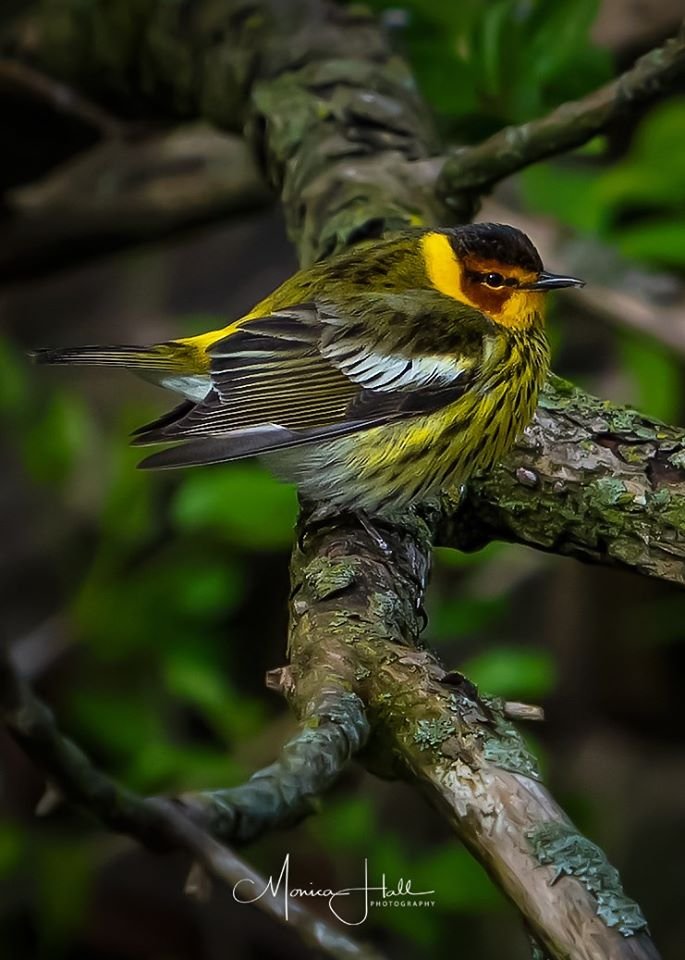Cape May Warbler. Photo by Monica Hall
The Cape May Warbler really has very little to do with Cape May. Found in this New Jersey town by George Ord, and later described by Alexander Wilson, the bird didn’t reappear in Cape May, New Jersey for another century.
A more appropriate name might be the rosy-cheeked warbler or the budworm warbler. Many warblers in northern climes follow the spruce budworm, but few do it with the proclivity of Cape May Warblers. First, their breeding range in North America overlaps quite tightly with the range of black spruce. Second, they possess an ability to lay huge clutches of eggs in explosive budworm years, ranging from four to nine eggs. Quite a feat for a bird weighing .3 to .6 ounces.
Its Latin name might offer the most specific and colorful epithet. Setophaga means “moth eater” while tigrina means “tiger-striped”. Both males and females have bold stripes running up to their chin and a white patch on their greater coverts.
In Wisconsin, Cape May Warblers are a true northern species, mostly breeding north of U.S. Highway 8 and in the boreal zones of Door County. They need large, mature forests with black spruce. A unique adaptation of this warbler is its tubular tongue, which allows it to nectar from flowers and pluck insects too. Cape Mays have even been found using hummingbird feeders.
Photo by Andy Reago & Chrissy McClarren
Photo by Andy Reago & Chrissy McClarren
You might catch the tail end of the warbler migration in the next week or so, with a Cape May mixed in for good measure. They’re often in tree tops singing a high-pitched song only a bird of the north could love… sleet sleet sleet sleet sleet.
Written by Drew Harry, Faville Grove Sanctuary land steward
Cover photo by Andy Reago & Chrissy McClarren








